Pre-NEET Surgery [Shared by Ussama Maqbool]
Bạn đang xem bản rút gọn của tài liệu. Xem và tải ngay bản đầy đủ của tài liệu tại đây (2.05 MB, 124 trang )
Pre NEET
Surgery
Rohan Khandelwal
Jainendra K Arora
MS (Gen Surgery) MRCS (Edin)
MS (Gen Surgery) FIAGES
®
J AYPEE BROTHERS MEDICAL PUBLISHERS (P) LTD
New Delhi • Panama City • Lo ndo n • Dhaka • Kathm an du
®
Jaypee Brothers Medical Publishers (P) Ltd
Headquarters
Jaypee Brothers Medical Publishers (P) Ltd
4838/24, Ansari Road, Daryaganj
New Delhi 110 002, India
Phone: +91-11-43574357
Fax: +91-11-43574314
Email:
Overseas Of fices
J.P. Medical Ltd
83, Victoria Street, London
SW1H 0HW (UK)
Phone: +44-2031708910
Fax: +02-03-0086180
Email:
Jaypee-Highlights Medical Publishers Inc.
City of Knowledge, Bld. 237, Clayton
Panama City, Panama
Phone: +507-301-0496
Fax: +507-301-0499
Email:
Jaypee Brothers Medical Publishers (P) Ltd
17/1-B Babar Road, Block-B, Shaymali
Mohammadpur, Dhaka-1207
Bangladesh
Mobile: +08801912003485
Email:
Website: www.jaypeebrothers.com
Website: www.jaypeedigital.com
Jaypee Brothers Medical Publishers (P) Ltd
Shorakhute, Kathmandu
Nepal
Phone: +00977-9841528578
Email:
© 2013, Jaypee Brothers Medical Publishers
All rights reserved. No part of t his book may be reproduced in any form or by any means
without the prior permission of the publisher.
Inquiries for bulk sales may be solicited at:
This book has been published in good faith that the contents provided by the contributors
contained herein are original, and is intended for educational purposes only. While every
effort is made to ensure accuracy of information, the publisher and the author(s) specifically
disclaim any damage, liability, or loss incurred, directly or indirectly, from the use or application
of any of the contents of this work. If not specifically stated, all figures and tables are courtesy
of the author(s). Where appropriate, the readers should consult with a specialist or contact
the manufacturer of the drug or device.
Pre NEET Surgery
First Edition: 2013
ISBN : 978-93-5090-311-7
Printed at
Dedication
To our family, teachers and friends!!
To all the students who are the driving force behind
this book
Contributors
We would like to sincerely thank
Dr Ila Khandelwal for her constant support
and contributions in the manuscript.
Dr Mayank Mehrotra and Dr Sunny Jain
for their valuable inputs.
Preface
“We are what we repeatedly do. Excellence, therefore, is not an act
but a habit.”
— Aristotle
We bring to you this book in a time when a lot of anxiety has been
created by the announcement of the new pattern (NEET). To get
accustomed to the new pattern seems challenging but regular 'concept'
based studies can help you conquer NEET.
This book includes 150 questions based on commonly
encountered clinical scenarios to enhance your concepts and
knowledge of Surgery. Most of these topics are “high yield” for your
upcoming exam and the explanations have been taken from standard
textbooks of Surgery and its sub-specialties.
In any book of this kind, some inaccuracies are inevitable. In spite
of our hard work in verifying each and every statement, some errors
might have crept in. Suggestions and compliments for the improvement
of this book are heartily welcome and shall be of use in enhancing the
merits of future editions.
For any suggestion and feedback, you can mail us on
Jainendra K Arora
Rohan Khandelwal
From the Publisher’s Desk
We request all the readers to provide us their valuable suggestions/errors
(if any) at:
so as to help us in further improvement of this book in
the subsequent edition.
Tips to tackle NEET
•
The focus of the exam would be on “clinical scenarios”. Practice
questions based on them regularly.
•
Try to identify “key words/ clues” in the questions to save precious
time.
•
Don’t assume any facts in the clinical scenarios. Focus on the
information provided in the question.
Contents
1. Questions ......................................................
1 – 47
2. Answers ..........................................................
48 – 115
Pre NEET Surgery
QUESTIONS
1. A 17-year-old boy presents to the emergency room with testicular
pain of 5 hrs duration. The pain was of acute onset and woke the
patient from sleep. On physical examination, he is noted to have a
high-riding, indurated, and markedly tender left testis. Pain is not
diminished by elevation. Urinalysis is unremarkable. Which of the
following statements regarding the patient’s diagnosis and treatment
is true?
a. Patient should be observed for 6 hours after starting IV antibiotics
b. Operation should be delayed until a color doppler confirms the
diagnosis
c. The majority of testicles that have undergone torsion can be
salvaged if surgery is performed within 24 h
d. If torsion is found, both testes should undergo orchiopexy
2. A 45 year old post-menopausal lady presents with a 3 cm
malignant right breast lump in the upper inner quadrant. On
examination she has no axillary lymphadenopathy and her biopsy
report is positive for ER and PR receptors but negative for HER-2neu. Mammography shows a BIRADS VI lesion in the right breast and
a normal study on the other side. The surgeon wants to discuss her
treatment plan with her. Which one of the following options best
describes her treatment plan?
a. MRM followed by adjuvant chemotherapy
b. Breast conservation surgery with sentinel lymph node biopsy
followed by chemotherapy, radiotherapy and hormonal therapy
c. BCS with radiotherapy followed by hormonal therapy
d. MRM followed by chemotherapy plus hormonal therapy.
3. 36 year old farmer presents to the OPD with gradual blackening
of the left great toe. He has been smoking one bundle of bidis for the
last 15 years. All of the following statements regarding the condition
this patient is suffering from are true EXCEPT?
2
a.
b.
c.
d.
Pre-NEET Surgery
It commonly affects males less than 40 years of age
It is only seen in the lower limb
Lumbar sympathectomy does not offer permanent cure
Artery and vein, both are involved in the disease process.
4. A 56 year old man residing in the hills presents to a doctor with
complains of a non resolving small bump next to his nose for the last
10 months. The swelling occasionally bleeds when he scratches it. He
is a farmer and spends much of his time outdoors. Examination reveals
a 0.6-cm flesh-colored papule with telangiectatic vessels, a rolled edge
(see image). Which of the following is the expected progression of this
lesion?
Fig. 1
a.
Good prognosis if excised early, but a propensity for lymphatic
metastasis.
b. Occurs exclusively within the epidermis and has no malignant
potential.
c. Slow growth with destruction of local tissue
d. Undergoes an initial radial growth phase that is followed by a
vertical growth phase. Prognosis is related to depth of the lesion
at time of excision.
5. A 52 year old patient comes to the emergency department (ED)
complaining of acute onset tearing pain in his back. On chest
x-ray, it is noted that he has a widened mediastinum. What is the
most common etiology of this condition?
Questions
3
Fig. 2
a.
b.
c.
d.
Atherosclerosis
Hypertension
Rheumatic heart disease
Trauma
6. A 33-Year-old woman presents to the emergency with diffuse,
cramping abdominal pain, nausea and vomiting that began this
morning. The abdominal pain is diffuse throughout and the patient
also describes her abdomen as looking slightly enlarged. She has a
history of chronic pancreatitis, as well as a cholecystectomy and two
cesarean sections. The patient states that she has had flatus but no
bowel movements since the pain began. On physical examination,
there is diffuse abdominal distention and high- pitched bowel sounds
without rebound tenderness of guarding present. Given the clinical
picture and upright x-ray of the abdomen shown in the image, which
of the following is the most likely diagnosis?
Fig. 3
4
Pre-NEET Surgery
a.
b.
c.
d.
Colon cancer
Mesenteric ischemia
Pancreatitis
Small bowel obstruction
7. A 36-year-old man with a history of abdominal tuberculosis
presents to the emergency with 2 days history of increasing abdominal
pain. The pain is diffuse, although most intense in the peri-umbilical
region. On questioning, he notes that he has not had a bowel
movement since the onset of the pain, nor has he vomited. On initial
physical examination, his abdomen is very distended and tender to
palpation. One hour later, his clinical condition has worsened. Which
of the following additional finding would most indicate the need for
emergent surgery?
a. Absence of bowel sounds
b. Absence of flatus
c. Bilious vomiting
d. Diffuse rebound tenderness
8. A 60-year-old man presents to the ED with severe headache and
diaphoresis that has been occurring intermittently for the previous 24
hours. He also notes occasional palpitations. The patient’s blood
pressure is 220/110mm Hg, and he has papilledema on funduscopic
examination. Intravenous phentolamine is effective at improving his
blood pressure. Subsequent measurement of 24-hour urinary
catecholamine metabolites yields increased values.
With which of the following neoplastic diseases is this patient’s cancer
often associated?
a. Insulinoma
b. Medullary thyroid cancer
c. Pancreatic adenocarcinoma
d. Pituitary adenoma
9. A breast cancer survivor presents to the clinic complaining of
swelling of the right upper limb with reddish blue maculo-pappular
lesions. She was treated for right sided carcinoma breast 10 years
back with MRM, chemotherapy and radiotherapy. What is the probable
cause of the patient’s symptoms?
a. Recurrence
Questions
5
b. Chronic lymphedema
c. Stuart- Treves syndrome
d. Axillary vein thrombosis
10. A 42-year-old lady with a prior history of intermittent right upper
quadrant (RUQ) abdominal pain following meals, presents to the doctor
with a more severe episode of a similar pain. She has also had nausea
and vomiting. On physical examination, she is febrile to 38.2oC
(100.8oF), obese, and has tenderness to palpation in the RUQ. An
abdominal ultrasound reveals some stones in her gallbladder.
Laboratory tests show:
WBC count
13,000/mm3
Total bilirubin
3.8mg/dL
Aspartate aminotransferase
130 U/L
Alanine aminotransferase
150 U/L
Alkaline aminotransferase
300 U/L
Amylase
<30 U/L
Lipase
8 U/L
Which of the following is most likely responsible for her symptoms
and laboratory values?
a. A stone obstructing her common bile duct
b. A stone obstructing her cystic duct
c. A stone obstructing her pancreatic duct/ampulla of Vater
d. Stones in her gallbladder
11. A 17-year-old boy is brought to the emergency after a road traffic
accident. Upon presentation the patient is noted to have multiple
mandibular and maxillary fractures as well as an open right-sided fibular
fracture. The cervical spine was stabilized during transport to the
hospital. The patient remains unconscious with an oxygen saturation
of 78% on oxygen via face mask with a pulse of 146/min and a blood
pressure of 60/20 mm Hg. What is the next step in management for
this patient?
a. Administer fluids
b. Continue with face mask ventilation and proceed with the rest of
the primary trauma survey
c. Proceed with a cricothyroidotomy
d. Proceed with nasopharyngeal intubation
6
Pre-NEET Surgery
12. A 65-year-old man in the hospital receiving spinal anesthesia for
crush injuries to his lower extremities starts to notice labored breathing.
He is afebrile but develops nausea and vomiting, and last had a bowel
movement yesterday. His abdomen is distended and tympanic to
percussion, although there are scattered bowel sounds. A plain
abdominal film reveals dilated small and large bowel loops. Watersoluble enema fails to reveal mechanical obstruction. What is this
patient’s most likely diagnosis?
a. Acute colonic pseudo-obstruction (Ogilvie’s syndrome)
b. Diverticulitis
c. Intussusception
d. Left-sided colonic adenocarcinoma
Fig. 4
13. A 35-year-old man is brought to the emergency department by
ambulance after having a tonic-clonic seizures at work. The patient
reports that he has always been healthy and has never had a seizure
before. On further questioning, the patient reports that he has been
having intermittent bloody stools for the past 4 months. A CT scan of
the head reveals an irregular 3 x 4 cm mass extending from the right
to the left hemisphere. CT of the abdomen shows multiple polypoid
masses in the sigmoid colon. Which of the following is the most likely
diagnosis?
a. Gardner’s syndrome
b. Hereditary nonpolyposis colorectal carcinoma
c. Tuberous sclerosis
d. Turcot syndrome
Questions
7
14. An obese 46-year-old, multiparous woman presents to the
physician with non radiating
right upper quadrant pain and fever that was preceded by nausea and
vomiting. Ultrasonography shows hyperechogenic structures in the
right upper quadrant. Laboratory testing reveals a WBC count of
14,500/mm3, an erythrocyte sedimentation rate of 40 mm/hr, and a
serum amylase level of 70 U/L. Which of the following is the most
likely diagnosis in this patient?
a. Acute acalculous cholecystitis
b. Acute calculous cholecystitis
c. Acute pancreatitis
d. Carcinoma of the pancreas
15. A 17-year-old boy while playing in the park slips and falls,
straddling the rail. His father rushes him to the emergency where he
complains of inabaility to pass urine. His genital examination is notable
for ecchymosis and swelling of the scrotum and perineal region and
there is blood at the tip of the meatus. Digital rectal examination is
within normal limits. Which of the following is the source of this urinary
leakage?
a. Penile urethra rupture
b. Superior bladder wall rupture
c. Urethral rupture above the urogenital diaphragm
d. Urethral rupture below the urogenital diaphragm
16. A 35-year-old man presents to the physician with a 2-month history
of watery diarrhea. He has a diastolic murmur that gets louder with
inspiration and is best heard over the left lower sternal border. His
face is warm and appears to be engorged with blood for several minutes
during the examination. His laboratory studies show the following:
Vanillylmandelic acid: 4 mg/day (normal 0-7 mg/day)
Metanephrine, urine: 260 μg/g of creatinine (normal 0-300 μg/g)
Homovanillic acid, urine: 12 mg/day (normal 0-15 mg/day)
5-HIAA: 30 mg/day (normal 0-9 mg/day)
A colonoscopy is planned for this patient. It is most likely to show a
lesion located near which of the following?
a. Appendiceal orifice
8
Pre-NEET Surgery
b. Caecum
c. Sigmoid colon
d. Rectum
17. A 52-year-old woman undergoes a sigmoid resection with primary
anastomosis for recurrent diverticulitis. She returns to the emergency
room 10 days later with left flank pain and decreased urine output;
laboratory examination is significant for a white blood cell (WBC)
count of 20,000/mm3. She undergoes a CT scan that demonstrates
new left hydronephrosis, but no evidence of an intraabdominal abscess.
Which of the following is the most appropriate next step in
management?
a. Intravenous pyelogram after kidney function tests
b. Intravenous antibiotics and repeat CT in one week
c. No further management if urinalysis is negative for hematuria
d. Immediate reexploration
18. A 34-year-old man develops an enterocutaneous fistula originating
in the ileum secondary to abdominal tuberculosis. Which of the
following would be the most appropriate fluid for replacement of his
enteric losses?
a. D5W
b. 3% normal saline
c. Ringer’s lactate solution
d. 0.9% sodium chloride
19. A patient meets with a road traffic accident and is taken to the
emergency department. During the secondary survey of a trauma
patient, it becomes apparent that there is a depressed skull fracture.
You must decide if this changes the management plan for this patient.
Which of the following statements regarding skull fractures is true?
a. Depressed fractures are those in which the patient’s level of
consciousness is diminished or absent
b. Compound fractures are those in which the skull is fractured and
the underlying brain is lacerated
c. Any bone fragment displaced more than the thickness of the
adjacent skull
d. Drainage of cerebrospinal fluid via the ear or nose requires prompt
surgical treatment.
Questions
9
20. A patient is brought to the burns department with burns third
degree burns involving 36% of the body surface area. On initial
examination the patient has a patent airway but the doctor suspects
airway burns. All of the following are danger points which suggest an
inhalational burn injury except
a.
Singed nasal hair
b. Carbonaceous deposit in the sputum
c.
Burns involving the trunk
d. Burns in a closed room
21. An 70 year old man is rushed to the emergency department from
his primary care physician’s office after his physician palpates a
pulsating mass in his abdomen. The patient is diagnosed with an
abdominal aortic aneurysm. Instead of repairing the aneurysm by
surgically opening the abdomen, the surgeon decides to perform
endovascular stenting and grafting. The stent is inserted into the femoral
artery and threaded up toward the aortic defect. To access the femoral
artery the surgeon must open the femoral sheath and expose its
contents. Which of the following structures is enclosed inside the
femoral sheath?
a.
Cooper’s ligament
b. Femoral canal
c.
Femoral nerve
d. Obturator nerve
22. An 80-year-old woman is admitted after being found on the floor
in her apartment. She was found by her daughter, who estimates that
the patient may have been there for several days. Initial workup shows
that the patient had suffered a left middle cerebral artery stroke and
was unable to move from her position to call for help. On examination,
she is slightly obtunded and unable to talk but responsive to simple
commands. Although she lacks feeling in the right side of her body,
she complains of diffuse muscle pain, especially in her back, buttocks,
and thigh on the left side. Initial laboratory studies are ordered and
straight catheterization produces 40 mL of urine. Which of the sets of
labora-tory findings is this patient most likely to demonstrate?
10
Pre-NEET Surgery
Serum
Creatinine
Serum
Potassium
Urine for blood RBC’s in urine
(dipstick)
under microscopy
A
Decreased
Decreased
Negative
Negative
B
Raised
Decreased
Negative
Negative
C
Raised
Decreased
Positive
Negative
D
Raised
Raised
Positive
Negative
23. A 25-year-old woman presents to the doctor complaining of
restlessness and weakness for the past month. She states that her
husband passed away recently. She denies feeling depressed but does
report that she has trouble sleeping. She had an upper respiratory
infection last month and complains of the swelling in her neck. Her
blood is drawn, and laboratory tests show:
TLC: 9,000/cumm
Hemoglobin
11.0 g/dL
Hematocrit
40%
Platelet count
250,000/mm3
Thyroid-stimulating hormone
0.5 uU/mL
Free thyroxine
4.0 ng/dL
What is the cause of the patient’s symptoms?
a. Riedel’s thyroiditis
b. Depression
c. Sub-acute thyroiditis
d. Grave’s disease
24. A 65-year-old woman presents with 3 months of unintentional
weight loss, jaundice, and upper abdominal pain that radiates to her
back. Her gallbladder is palpable on physical examination, and an
ultrasound. Demonstrates dilated bile ducts with no visible stones.
Which of the following is a known risk factor for this patient’s condition?
a. Chronic gastritis
b. Diabetes insipidus
c. History of cholecystitis
d. Smoking
Questions
11
25. A 62 year-old woman visits a surgeon because she has been
experiencing blood in her stool that she describes as “maroon” in
color. Her past medical history is not significant and she is not on any
medications. In thinking about the possible causes of her lower
gastrointestinal bleed, which of the following lists is in order of most
common to least common?
a. Angiodysplasia > cancer/polyp > diverticulosis
b. Angiodysplasia > diverticulosis > cancer/polyp
c. Cancer/polyp > diverticulosis > angiodys-plasia
d. Diverticulosis > angiodysplasia > cancer/polyp
e. Diverticulosis > cancer/polyp > angiodysplasia
26. A 56-year-old man is seen because of facial swelling and cyanosis,
especially when he bends over. There are large, dilated subcutaneous
veins on his upper chest. His jugular veins are prominent even while
he is upright. Which of the following conditions is the most likely cause
of these findings?
a. Sclerosing mediastinitis
b. Thoracic aortic aneurysm
c. Constrictive pericarditis
d. Bronchogenic carcinoma
27. A businessman in his mid-40s presents with complaints of episodes
of severe, often incapacitating chest pain on swallowing. Diagnostic
studies on the esophagus yield the following results: endoscopic
examination and biopsy—mild inflammation distally; manometry prolonged high- amplitude contractions from the arch of the aorta
distally, lower esophageal sphincter (LES) pressure 20 mmHg with
relaxation on swallowing; barium swallow—2-cm epiphrenic
diverticulum. Which of the following is the best management option
for this patient?
a. Myotomy along the length of the manometric abnormality
b. Diverticulectomy, myotomy from the level of the aortic arch to
the fundus, fun doplication
c. Diverticulectomy, cardiomyotomy of the distal 3 cm of esophagus
and proximal cm of stomach with anti-reflux fundoplication
d. A trial of calcium channel blockers
12
Pre-NEET Surgery
28. The following cases are scheduled to be operated in the OR. You
are the resident on duty and you are told to identify the cleancontaminated case from the list.
a. Open cholecystectomy for cholelithiasis
b. Herniorrhaphy with mesh repair
c. Lumpectomy with axillary node dissection
d. Appendectomy with walled-off abscess
29. A 65-year-old woman presents with a 1-cm lesion with a pearly
border on her nose, and punch biopsy is consistent with a basal cell
carcinoma. She visits the doctor and he advises her Moh’s micrographic
surgery. Which of the following statements is true regarding this
technique?
a. Mohs surgery results in a larger cosmetic defect because of the
emphasis on obtaining negative margins circumferentially
b. The major benefit of Mohs surgery is a shorter operating time
c. Mohs surgery is indicated for all basal and squamous cell
carcinomas
d. Frozen sections are not necessary if Mohs surgery is performed
e. There is no difference in cure rates between wide local excision
and Mohs surgery
30. A 25-year-old man is brought to the emergency room after
sustaining burns during a fire in his apartment. He has blistering and
erythema of his face, left upper extremity, and chest, with frank charring
of his right upper extremity. He is agitated, hypotensive, and
tachycardic. Which of the following statements concerning this patient’s
initial wound management is correct?
a. Topical antibiotics should not be used, as they will encourage
growth of resistant organisms
b. Escharotomy should be performed only if neurologic impairment
is imminent
c. The total body surface area burnt in this patient is 36%
d. Excision of areas of third-degree or deep second-degree burns
usually takes place three to seven days after injury.
31. A 54 year old patient presents with adhesive intestinal obstruction
for which he undergoes laparotomy and adhesiolysis. Which of the
following statements regarding nutrition in the post-operative period
for this patient is true?
Questions
13
a.
Enteral nutrition has no advantages over parenteral nutrition in
postoperative patients
b. Institution of enteral feeding can be started once bowel sounds
appear
c. Institution of enteral feeding should be delayed until bowel function
returns as evidenced by passage of bowel movements
d. Parenteral nutrition should be instituted immediately
postoperatively and continued until enteral feeds have been
initiated
32. A 63-year-old man undergoes a partial gastrectomy with Billroth
II reconstruction for intractable peptic ulcer disease. Which of the
following metabolic disturbances is not a potential consequence of
this procedure?
a. Megaloblastic anemia
b. Iron-deficiency anemia
c. Osteitis fibrosa cystica
d. Osteoporosis
33. A 42 year old man presents to the doctor with c/o nervousness,
sweating, tremulousness and weight loss. A thyroid scan is performed
on the patient and image is shown below. The patient’s findings are
most consistent with which of the following disorders?
a. Hypersecreting adenoma
b. Grave’s disease
c. Lateral aberrant thyroid
d. Papillary carcinoma thyroid
Fig. 5
14
Pre-NEET Surgery
34. In which of the following cancers, LDH is taken as a marker of
metastasis?
a. Testis
b. Breast
c. Malignant melanoma
d. Cholangiocarcinoma
35. A 56 year old man who is chronic smoker suffers from a fall and
sustains fracture of the 3rd to 6th ribs on the right side. Chest X ray is
otherwise normal and shows no evidence of hemopneumothorax.
What is the management of the patient?
a. Strapping the chest wall with adhesive tape
b. Admission to the hospital and treatment with oral analgesia
c. Tube thoracostomy
d. Placement of an epidural for pain management
36. A 22 year old woman arrives in the emergency room following
an automobile accident. She is acutely dyspneic with a respiratory
rate of 44/ min. She has PR of 120/min and a systolic BP of 80mm
Hg. She is also found to have raised JVP. She has diminished breath
sounds on the left side and the left side is hyper-resonant on percussion.
Which of the following is the next best step in the management of this
patient?
a. Do a chest X ray
b. Do an ABG
c. Needle decompression of the left pleural space
d. Tube thoracostomy
37. A 60-year-old man seeks medical attention because of increasing
difficulty in urination (decreased flow, straining, hesitancy). A prostate
biopsy proves benign. Which of the following statements regarding
benign prostatic hyperplasia (BPH) is true?
a. PSA is the best screening method for carcinoma prostate
b. Low bladder pressures and low flow rates are suggestive of outflow
obstruction
c. All patients with BPH should be treated to prevent renal failure
due to outflow obstruction
d. Indications for surgery include an episode of acute or chronic
retention.
Questions
15
38. During the course of an operation on an unstable, ill patient, the
right ureter is lacerated through 75% of its circumference. If the patient’s
condition is felt to be too serious to allow time for definitive repair,
which of the following would be an appropriate damage control
procedure?
a. Placement of an external stent through the proximal ureteral stump
with delayed reconstruction
b. Ipsilateral nephrectomy
c. Placement of a suction drain adjacent to the injury without further
manipula tion that might convert the partial laceration into a
complete disruption
d. Bringing the proximal ureter up to the skin as a ureterostomy.
39. A 16-year-old male is rescued from a burning vehicle. He sustained
a circumferential burn but no fractures or other soft tissue trauma to
his left lower extremity during extrication from the burning vehicle.
Several hours after admission, he complains of numbness and severe
pain in his left calf. On examination, he has a palpable, although
weak, dorsalis pedis pulse. Which of the following is the most
appropriate management?
a. Four-compartment fasciotomies
b. Medial and lateral escharatomies
c. CTangiography of the left lower extremity
d. Limb elevation
40. A previously healthy 55-year-old man undergoes elective right
hemicolectomy for a Stage 1 (T2N0Mo) cancer of the cecum. His
postoperative, ileus is somewhat prolonged,, and on the fifth
postoperative day his nasogastric tube is still in place. Physical
examination reveals diminished skin turgor, dry mucous membranes,
and orthostatic hypotension. Pertinent lab-oratory values are as follows:
ABG: pH 7.56
Pco2 50 mmHg
Po2 85 mmHg
Serum electrolytes (meq/L): Na+ 132, K+ 3.1, HCQ3 42.
Urine electrolytes (meq/L): Na+ 2, K+ 5, Cl 6.
What is the patient’s acid- base abnormality?
a. Uncompensated metabolic alkalosis
16
Pre-NEET Surgery
b. Respiratory acidosis with metabolic compensation
c. Combined metabolic and respiratory alkalosis
d. Metabolic alkalosis with respiratory compensation
41. A 60-year-old woman has had pain in her right shoulder and has
been treated with analgesics without relief. Chest x-ray reveals a mass
in the apex of the right chest. A transthoracic needle biopsy documents
carcinoma. Superior pulmonary sulcus carcinomas (Pancoast tumors)
are bronchogenic carcinomas that typically produce which of the
following clinical features?
a. Atelectasis of the involved apical segment
b. Horner’s syndrome
c. Pain in the T4 and T3 dermatomes
d. Hemoptysis
42. A 32-year-old woman has a screening chest x-ray, and a 1.5-cm
mass is noted in the right lower lobe. She is a nonsmoker.
Bronchoscopy shows a mass in the right lower lobe orifice, covered
with mucosa. Biopsy indicates this is compatible with a carcinoid tumor.
Which of the following statements is true regarding carcinoids in the
lung?
a. They frequently metastasize
b. They most commonly arise in peripheral terminal bronchioles
c. They commonly produce the carcinoid syndrome
d. They are radiosensitive
43. A 40-year-old nonsmoking woman comes to the physician
complaining of a persistent cough and loss of weight and appetite
over the past 3 months. On radiography, a well-demarcated subpleural
mass is found on the right lung. Which of the following types of
carcinoma does this patient most likely have?
a. Adenocarcinoma of the lung
b. Carcinoid of the lung
c. Metastases to lung from a distant primary tumor
d. Small-cell carcinoma of the lung
44. A 72-year-old man presents to his primary physician with
complaints of fatigue, weight loss, dyspnea on exertion, abdominal
pain, and dark blood in the stool. Although the patient had a negative
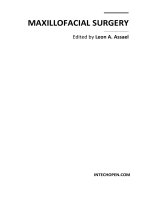
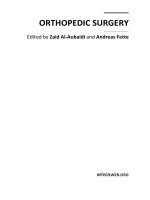
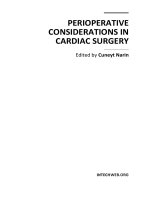

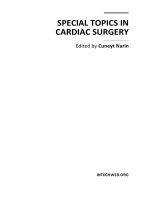
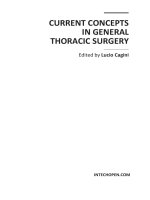
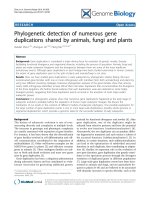

![Pathology Quick Review and MCQs[Ussama Maqbool] (1)](https://media.store123doc.com/images/document/2018_11/01/medium_TvxHY7f5O1.jpg)
![Pathoma[Ussama Maqbool] (1)](https://media.store123doc.com/images/document/2018_11/01/medium_txi1541067962.jpg)